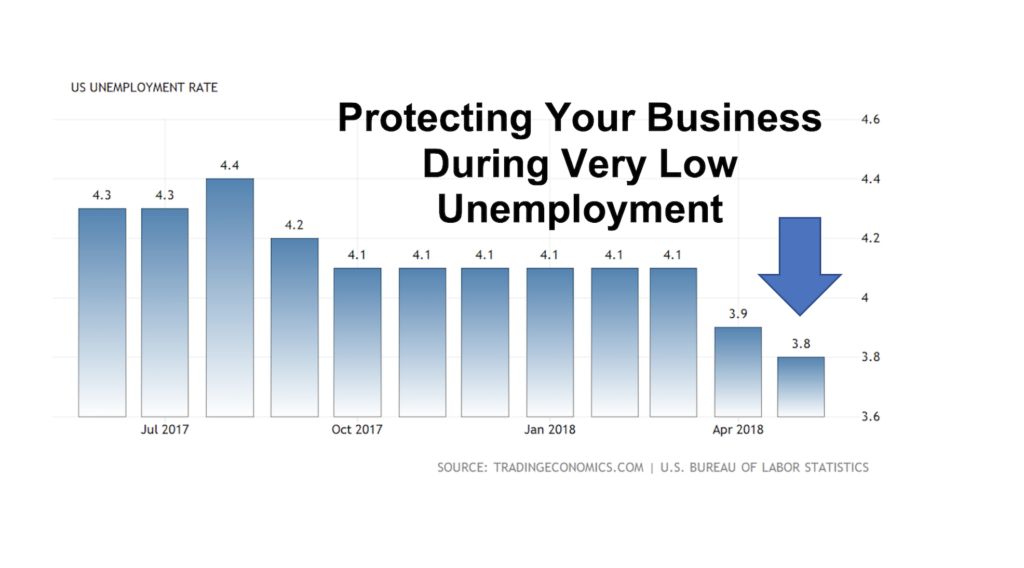Why “Showing some love” matters
In April of 2018, the unemployment rate dipped below 4% (Click)which should be a call to action for businesses to recognize that their best talent may be on the menu of other organizations.
While most businesses are enjoying prosperity and growth, let’s not forget that major challenges don’t take a break during good business cycles.
A key aspect for continued business growth involves acquiring the critical talent who can continue to fuel the properity. With the supply of talent very limited during this period of low unemployment, the obvious avenue to source critical talent will come from recruiting currently employed professionals away from one company and into another. “Poaching” has nothing to do with it; all members of the business community have the responsibility to consider opportunities that can advance a career and deliver higher rewards.
From the perspective of the growing business, a great defense may be just as critical as a great offense. How would you protect your business during low unemployment? or How would you protect your business when employment is high?
Factors to protect your business
Think about your employees as either being loosely connected to your business or glued-in to their work. The loosely connected ones are the most likely to be recruited away. What can be done to lower the possibilities that your employees will take another role and what can be done to reduce the element that you will be surprised when the leave?
Worth noting, I have yet to meet a business leader who enjoyed being surprised by an employee’s departure. Shouldn’t protecting your business include reducing the surprise factor? If you can reduce the surprise of a departure, your business will focus more on functioning on the business at hand and less on reacting to responding to the departure.
Here are two tips to protect your business when the demand for talent is greater than the supply:
Tip 1)
As a business leader, when was the last time you audited your company’s hiring process? During times of low unemployment, the number of qualified candidates for any given role will be a small number. This is the time when it becomes very important for your business to attract and acquire top talent in beating out other employers seeking them.
Do you, the business leader have a first hand appreciation for what potential candidates experience when interviewing with your business? Are you implementing a structured, proven hiring process? Is the hiring manager directly involved? Does your process include a clearly defined path for the newly hired talent to be successful in their new role?
The auditing of your business’s hiring process will reveal the areas that need to be adjusted in order to best identify, attract and hire the best talent.
Tip 2)
How well defined is your employee rewards program? This is really an alignment question. For companies who lack alignment and reward all employees when and only when the company reaches profit thresholds, the net result is that the super achievers become frustrated because their efforts are supporting the average achievers. This type of model leaves a business with mediocre level talent.
An aligned rewards program or a rewards based compensation model serves several purposes that include:
a) The implementation of a structure with goals that have been defined for each employee and specific rewards for the achievement of each goal.
b) An aligned program measures and rewards the employees who are delivering value. The good and great employees receive rewards for their contributions and are more likely to remain an engaged employee.
c) A structured rewards based program requires interaction and communication between the employee and manager. One important result of the outcome of the communication is that when the employee’s performance declines, the manager can clearly see it. Under this process, it is much less likely that the manager will be surprised when the employee leaves.
While you are thinking about landing that next contract or landing the next great client, what are the efforts that your company is making to insure your existing talent remains engaged?
Good hunting.

